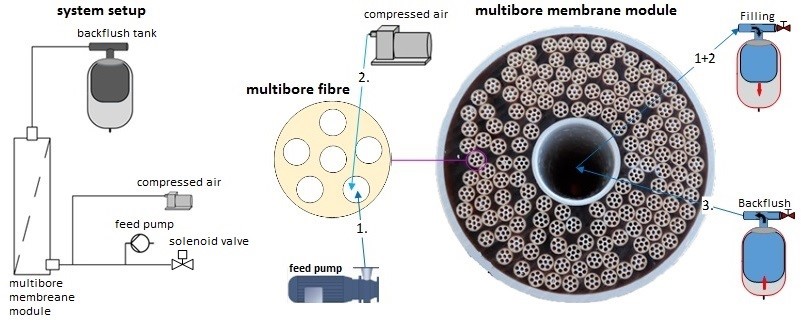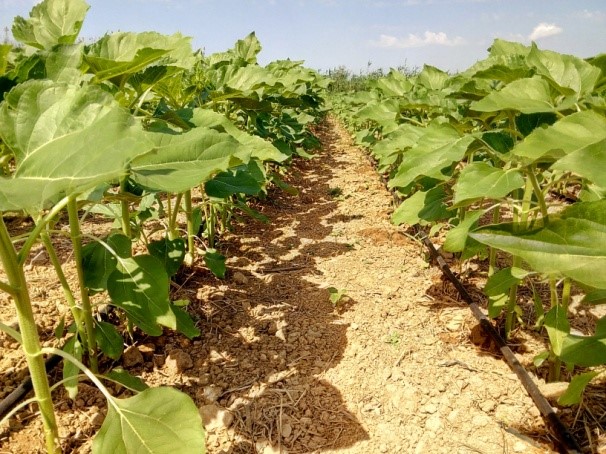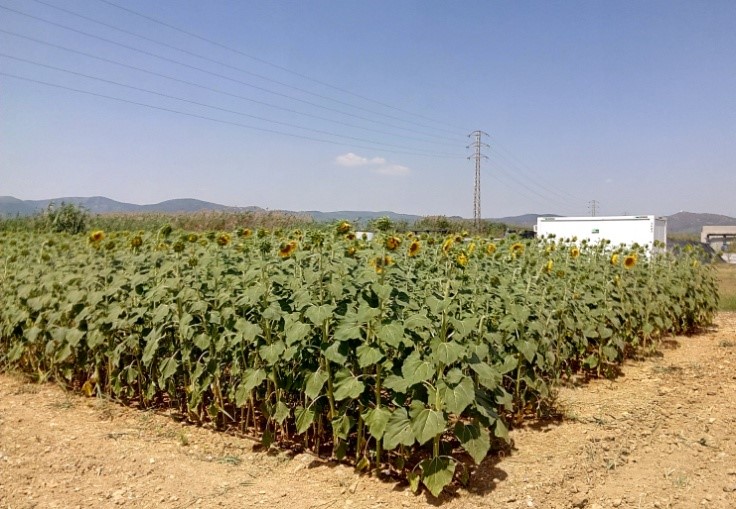Case study 1 - Pilot plant under full-operation
In the last few months in Agròpolis, the operation of the 3 tubular horizontal semi-closed photobioreactors (PBRs) has been maintained steadily in order to assess the nutrients removal capacity and biomass production under winter and spring time conditions. The PBRs have been operated in parallel, with a hydraulic retention time of 5 days. The activity of the microalgae has been clearly influenced by the environmental conditions. Low solar radiation and temperature were observed during winter and also spring, due to an atypical cold and rainy weather in a great part of the spring. Nonetheless, solar radiation and temperature increased at the end of the period. The nitrogen removal efficiency achieved 49% and 59% during winter and spring, respectively. Phosphate removal was very high during the whole period, showing no clear seasonal variations. The production of biomass was also affected by the environmental conditions, being reduced to less than 0.5 kg VSS/d during winter.

Case Study 1 pilot plant in Agròpolis (Barcelona), with the tubular PBRs at the forefront
Successful biomass separation was achieved in the lamella settler, producing a clarified effluent with low suspended solids concentration and turbidity.
Regarding the biomass produced in the PBRs, cyanobacteria were outcompeted by green microalgae in this period, showing lower dominance compared to the previous period. The next steps will focus on increasing the cyanobacteria dominance and the production of PHA (bioplastics). At this aim, the operational conditions of the pilot plant will be adjusted according to the experience gained in experiments at lab scale.
Microalgal biomass has been digested in the anaerobic digester at 35ºC, after thermal pretreatment at 75oC. Co‑substrate was not fed during this period, in order to assess the biogas production of the microalgal biomass. The biogas production rate was clearly affected by the amount of microalgal biomass produced in the PBRs. During winter, the biogas production was usually lower than 100 L biogas/d, due to the reduced organic loading rate, while in the last weeks of the period the production achieved 160 L/d. The microalgae-based biogas upgrading technology was designed, implemented and operated. It consists of a 45 L bubble absorption column (AC) interconnected to the PBRs. The objectives over the coming months are to optimize the operation of the biogas upgrading column and to increase biomethane production.
Biogas upgrading system
The solar‑driven filtration and disinfection system has been operated during the whole period, producing a high quality final effluent. Solarspring has installed two solar powered disinfection systems, using ultrafiltration as key technology to disinfect pre-treated water. The big challenge for ultrafiltration in this application is to prevent the UF-modules form biofouling and clogging. To find the optimum operation parameters for this wastewater application both disinfection systems have been installed in parallel with the option to modify single parameters and systems settings of each system. Both systems have been running from November 2017 until now. The system layout of one disinfecting system has been modified to perform first long term test on different membrane cleaning strategies, such as high flux pulsing backflush, forward flush and backflush into evacuated capillaries. Since November 2017 the solar ultrafiltration is operating stable, just applying automatic mechanical backflush every hour and manual chemical cleanings every 3 months.
This very good operational result have been gained with a so called multibore fiber, a membrane technology developed by Inge (BASF) in combination with an innovative backflush strategy into evacuated capillaries, developed by Solarspring.
Instead of a conventional backflush pump, a bladder pressure tank has been used for the long-term backflush tests into evacuated capillaries. Due to the increases acceleration (pulsing effect) and the increased flux of the backwash water, the cleaning performance is a lot higher and consumes less water compared to a backwash pump. The backflush tank is filled directly by the feed pump. Solenoid valves are used to control the water flow.
In order to proof that the UF-membrane from INGE is able to resist the high mechanical stress caused by this backflush strategy, another ultrafiltration system for stress test analysis has been installed at the lab of Solarspring in March 2018. This system performs the backflush every 5 minutes (24h/d) instead of once per hour.

System setup for backflush into evacuated feed capillaries of the ultrafiltration module
The final effluent was reused for smart irrigation of the rapeseed field. Rapeseeds were harvested after successful growth, and sunflowers have been recently seeded.


Sunflowers growing in Agròpolis (Barcelona), watered with the final effluent with the smart irrigation system
Additionally, some supplementary processes have been installed and started‑up during 2018. The nutrients recovery columns started-up operation in March 2018 and the monitoring results are periodically sent to Aarhus University for further processing and discussion.
The Sludge Treatment Wetland has been in operation since May. A new distribution system is put in operation in the facility. This is working very well. The Phragmites australis plants are developing quite well and the layer of the sludge starts to build up. When enough sludge is collected, validation tests will be done.

Sludge wetland built in Agrópolis (UPC, Barcelona), after start-up, fed with digestate

















